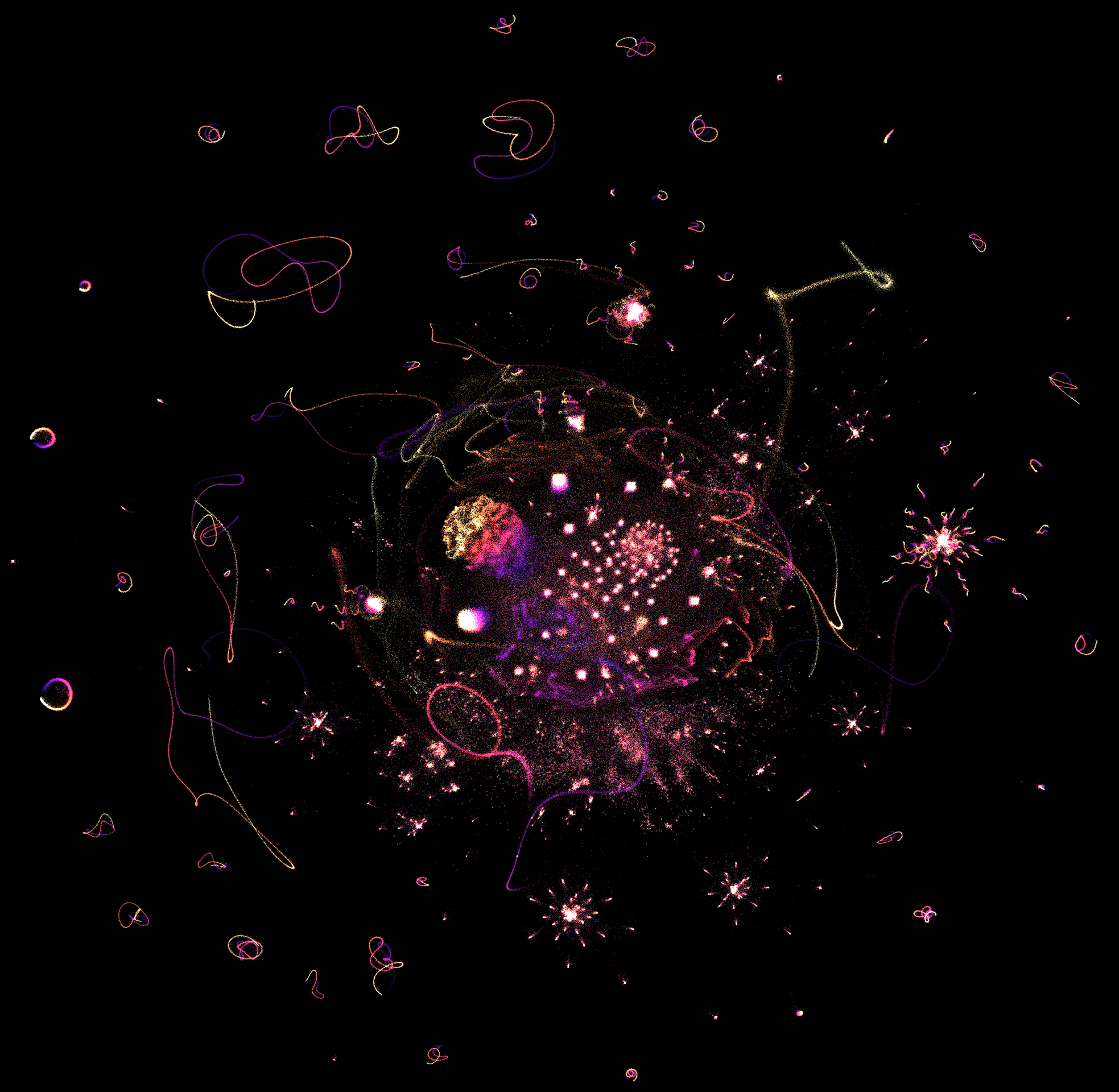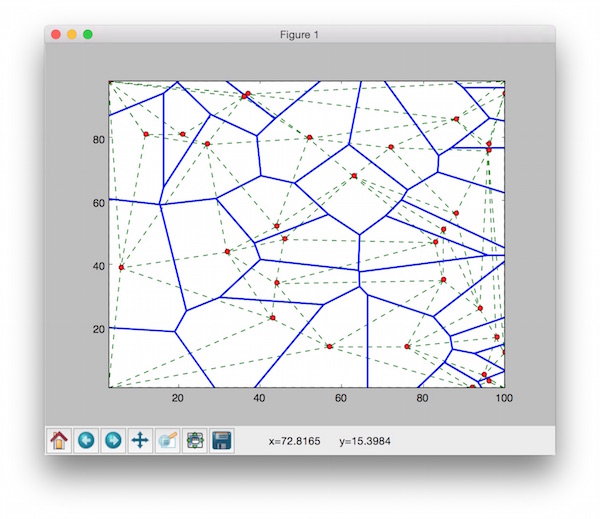131 private links
The set of all points closest to a given point in a point set than to all other points in the set is an interesting spatial structure called a Voronoi Polygon for the point. The union of all the Voronoi polygons for a point set is called Voronoi Tessellation.
Many applications have been found based on the neighbourhood information provided by this tessellation. The dual of Voronoi tessellation is Delaunay Tessellation, also referred to as Delaunay Triangulation or Triangulated Irregular Network (TIN), which are lines drawn between points where their Voronoi polygons have an edge in common.
Delaunay tessellation is the most fundamental neighbourhood structure because many other important neighbourhood structures, such as, Gabriel Graph, Relative Neighbourhood Graph and Minimal Spanning Tree, can be derived from it.

Gifsicle is a command-line tool for creating, editing, and getting information about GIF images and animations.
contains gifview a great slideshow tool for multi-frame gifs.
A nice blog post about Delaunay triangulation and Voronoi tessellation of a sphere.
Very nice interactive JavaScript animation that shows the triangulation and the tessellation as a function of some paramenters.

In their hearts, computers are sequential beasts. Their power comes from being able to break down the largest tasks into tiny steps that can be performed one after another. Often, though, our users need to see things occur in a single instantaneous step or see multiple tasks performed simultaneously.
A typical example, and one that every game engine must address, is rendering. When the game draws the world the users see, it does so one piece at a time — the mountains in the distance, the rolling hills, the trees, each in its turn. If the user watched the view draw incrementally like that, the illusion of a coherent world would be shattered. The scene must update smoothly and quickly, displaying a series of complete frames, each appearing instantly.
Double buffering solves this problem, but to understand how, we first need to review how a computer displays graphics.
Flameshot is an easy to use, open source, Qt-based screenshot utility which is adept at capturing custom areas of a desktop.
This is the first million integers, represented as binary vectors indicating their prime factors, and laid out using the UMAP dimensionality reduction algorithm by Leland Mcinnes. Each integer is represented in a high-dimensional space, and gets squished down to 2D so that numbers with similar prime factorisations are closer together than those with dissimilar factorisations.

Make your own quadrille, graph, hex, etc paper! Uses the pgf/TikZ package for LaTeX, which should be part of any modern TeX installation.
Example:

Peek creates animated GIF screencasts using FFmpeg and ImageMagick. It was built for the specific use case of recording screen areas, e.g., for easily showing UI features of your own apps or for showing a bug in bug reports. It is not a general purpose screencast app with extended features and it never will be.
Peek creates animated GIF screencasts using FFmpeg and ImageMagick. It was built for the specific use case of recording screen areas, e.g., for easily showing UI features of your own apps or for showing a bug in bug reports. It is not a general purpose screencast app with extended features and it never will be.

We shall introduce PyDelaunay as a practical spatial construction. It is an efficient Python implementation of Voronoi/Delaunay Tessellation, which can be served as the Basic Map of the neighbourhood concept.
An Inkscape plugin that allows to organize a set of slides on top of Inkscape layers.
The plugin allows to export the slides as a pdf file composed by several pages, each one corresponding to one slide.
Photoshop is one of the most used image editing applications around. But how easy is it for a user to switch from Photoshop to the GIMP when they move from a Mac to Linux? A redditor is doing just that and wanted some feedback from his fellow Linux users.
